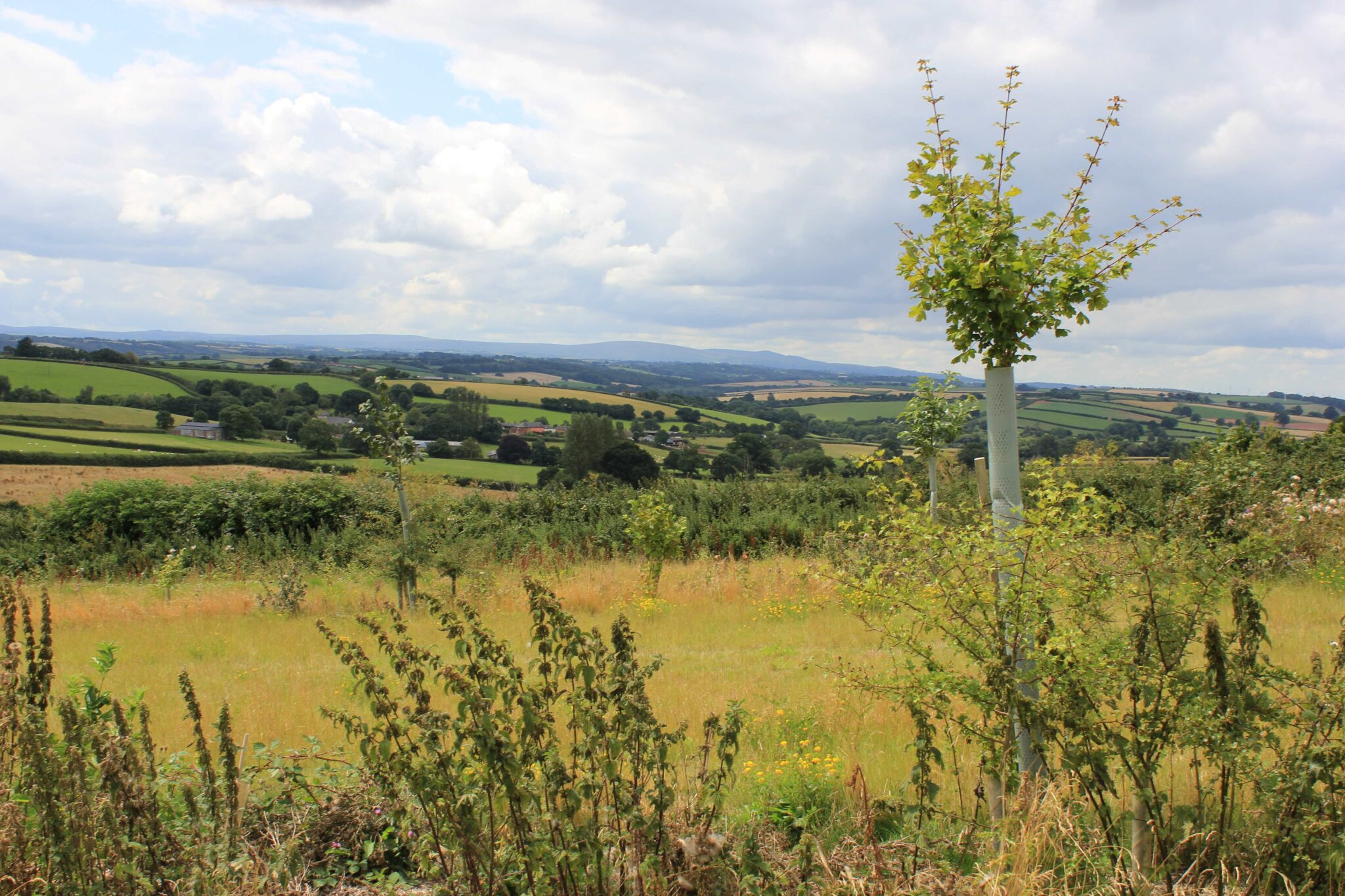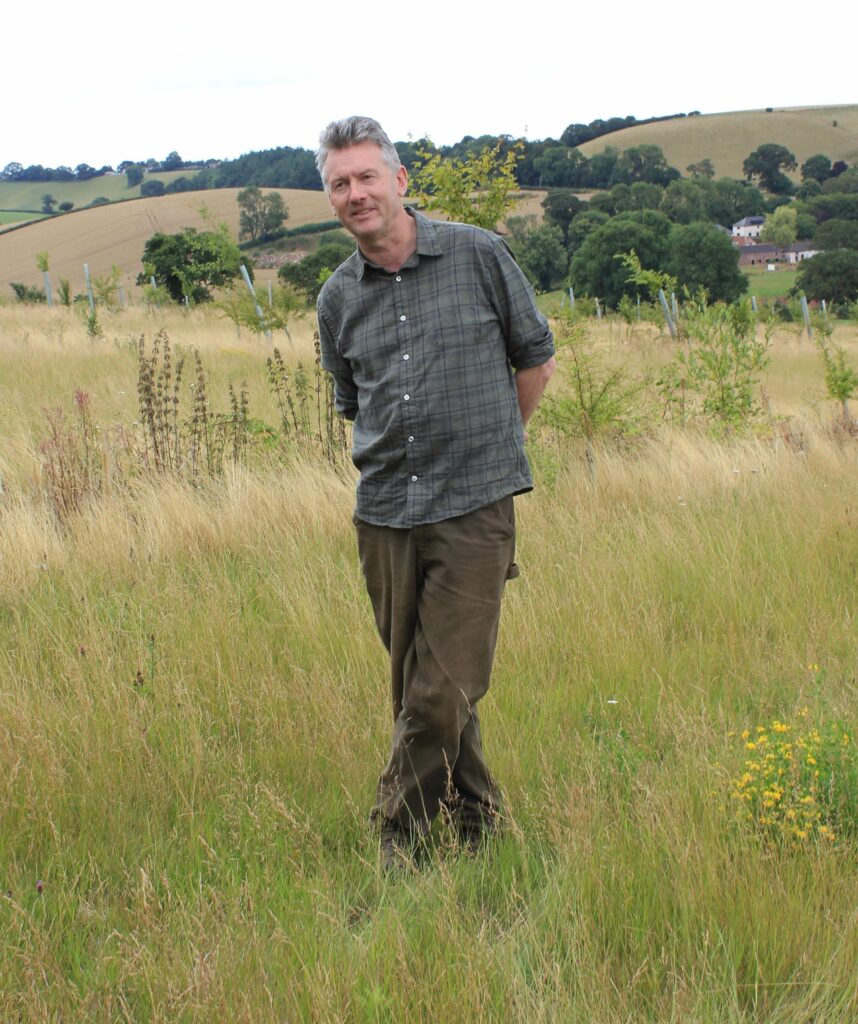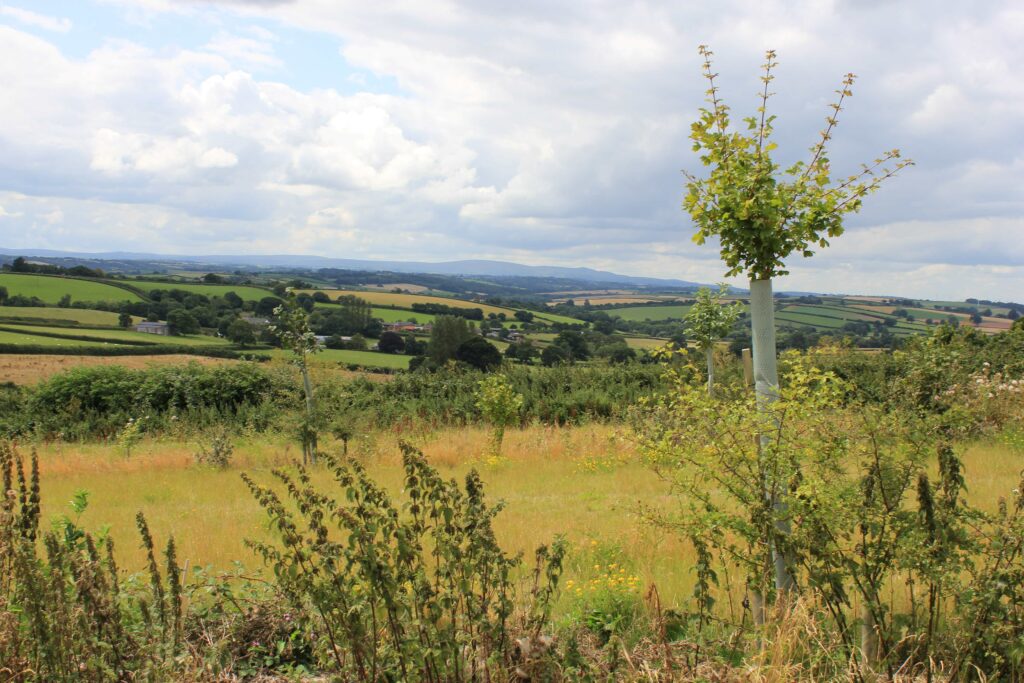
Meet Andy Gray, RSPB Fair to Nature beef farmer.
From environmental degradation to a fully regenerative system: how to build a sustainable business
Elston Farm is run by Andy Gray, a thirteenth generation Devon farmer who was brought up on a mixed Devon farm. When not farming or working on research, Andy manages M C Kelly butchers, which supplies RSPB Fair to Nature licensee, Farm Wilder with beef in its direct-to-consumer meat boxes.
Over the last five years, Andy has transitioned his farm in Devon from a predominantly intensive arable farm to a regenerative system designed to rebuild soil health, enhance biodiversity, and produce nutritious, 100% grass-fed beef and venison. Andy’s 62-hectare farm became RSPB Fair to Nature certified in 2023.
The change was desperately needed, Andy says. “Decades of conventional arable farming had depleted the soils of organic carbon and biology – the things that make soils function both for farmers and nature. When rain came in winter, I would watch precious topsoil wash off the farm and into the streams. When the weather dried up, the land would bake, and we would be in drought within weeks”.
As the soil worsened biodiversity declines followed. Invertebrate populations dwindled as did the birds that fed on them. Once common birds like Yellowhammers and Whitethroats, which had previously bred in the hedges and fed on insects in the arable margins, disappeared.

The driver behind Fair to Nature certification
Andy identified the scheme as having a shared recognition of the beneficial effect farming can have on wildlife populations if manged right. He also saw the value of a certification mark and brand to use as a tool for connecting with consumers.
“By working with Fair to Nature, we want to empower consumers to act for nature and buy food that creates space for nature.”
Better access to funding and government subsidies
In 2024, details of the Sustainable Farming Incentive were announced by DEFRA. Andy says “The joy with RSPB Fair to Nature is that it will help farmers identify and adopt some of the options that are on there. And those options will pay for fitting into the Fair to Nature certification schemes”.

Impact on nature
“The insects that were particularly depleted by the intensive management and are now coming back” Andy comments. The Fair to Nature standard encourages a wide range of habitats on farms including pollen and nectar mixes. This in turn boosts insect numbers with a range of habitat interventions that will encourage the Redstarts back to the farm which Andy is particularly motivated to see return.
TOGETHER WE CAN CREATE A BRIGHTER TOMORROW
Contact us today to find out how you can become part of the solution.
Register Interest
Sidebar form
or email us at fairtonature@rspb.org.uk
